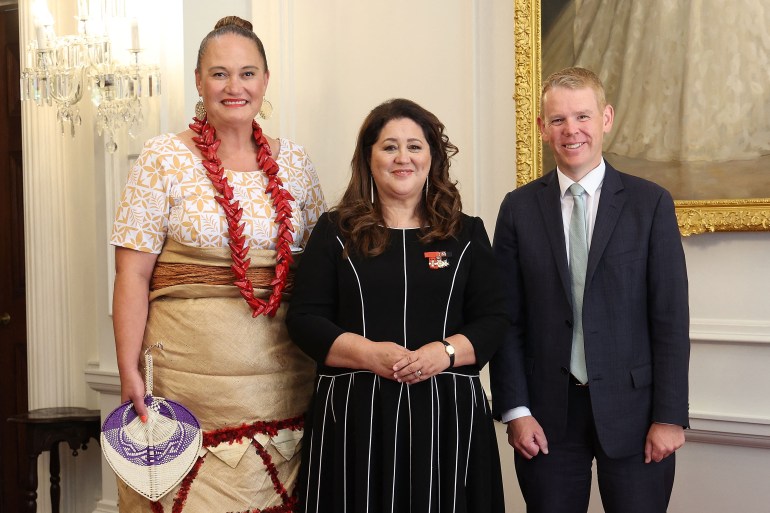The 44-year-old faces an uphill battle to lead the ruling Labour Party to victory in October’s election amid rising inflation and a looming recession.
Labour party leader Chris Hipkins has been sworn in as New Zealand’s new prime minister following the surprise resignation last week of Jacinda Ardern.
Hipkins formally took office in front of New Zealand’s governor-general – the representative of the United Kingdom’s King Charles who is the country’s head of state – in the capital, Wellington.
Carmel Sepuloni was also sworn in as deputy prime minister, the first person of Pacific Islander descent to hold the role, during the ceremony.
“This is the biggest privilege and responsibility of my life,” Hipkins said afterwards.
“I’m energised and excited by the challenges ahead.”
The 44-year-old, who previously led the country’s COVID-19 response, was elected to head the party on Sunday after Arden announced she would step down.
Hundreds of people gathered in the grounds of Parliament, breaking into spontaneous applause, as Ardern left for the final time.
She hugged each of her members of parliament in turn, with many looking visibly emotional, before travelling to Government House, where she tendered her resignation to Governor General Cindy Kiro.

Ardern was first elected as prime minister in 2017, before riding a wave of “Jacindamania” to secure a second term with a landslide victory in 2020.
But her centre-left government has increasingly struggled over the past two years, hampered by soaring inflation, a looming recession and a resurgent opposition.
Known as “Chippy”, Hipkins is well-known to New Zealanders for his competence in tackling COVID-19.
He describes himself as a “regular, ordinary Kiwi” from a working-class background who loves sausage rolls and cycling to work.
“COVID-19 and the global pandemic created a health crisis. Now it’s created an economic one and that’s where my government’s focus will be,” Hipkins has said previously.
A 1News-Kantar poll released in December 2022 had Labour’s support falling to 33 percent from 40 percent at the start of the year, meaning Labour would not be able to form a majority even with traditional coalition partner the Green Party at 9 percent.
The conservative National Party has benefitted from Labour’s decline.
